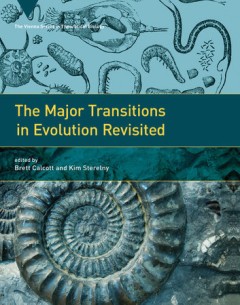Filter by

Power of position :classification and the biodiversity sciences
How biodiversity classification, with its ranking of species, has social and political implications as well as implications for the field of information studies. The idea that species live in nature as pure and clear-cut named individuals is a fiction, as scientists well know. According to Robert D. Montoya, classifications are powerful mechanisms and we must better attend to the machinations o…
- Edition
- -
- ISBN/ISSN
- 9780262369961
- Collation
- 1 online resource (272 pages).
- Series Title
- -
- Call Number
- -

The Major Transitions in Evolution Revisited
In 1995, John Maynard Smith and E?ors Szathm?ary published their influential book 'The Major Transitions in Evolution'. In this volume, scholars reconsider and extend the earlier book's themes in light of recent developments in evolutionary biology.OCLC-licensed vendor bibliographic record.
- Edition
- -
- ISBN/ISSN
- 9780262295703
- Collation
- 1 online resource (x, 319 pages) :illustrations.
- Series Title
- -
- Call Number
- -

Our ancient lakes :a natural history
The unexpected diversity, beauty, and strangeness of life in ancient lakes -- some millions of years old -- and the remarkable insights the lakes are yielding about the causes of biodiversity. Most lakes are less than 10,000 years old and short-lived, but there is a much smaller number of ancient lakes, tectonic in origin and often millions of years old, that are scattered across every continen…
- Edition
- -
- ISBN/ISSN
- 0262373521
- Collation
- 1 online resource (232 pages).
- Series Title
- -
- Call Number
- -

Agrobiodiversity :integrating knowledge for a sustainable future
Experts discuss the challenges faced in agrobiodiversity and conservation, integrating disciplines that range from plant and biological sciences to economics and political science. Wide-ranging environmental phenomena -- including climate change, extreme weather events, and soil and water availability -- combine with such socioeconomic factors as food policies, dietary preferences, and market f…
- Edition
- -
- ISBN/ISSN
- 9780262348805
- Collation
- 1 online resource
- Series Title
- -
- Call Number
- -
 Computer Science, Information & General Works
Computer Science, Information & General Works  Philosophy & Psychology
Philosophy & Psychology  Religion
Religion  Social Sciences
Social Sciences  Language
Language  Pure Science
Pure Science  Applied Sciences
Applied Sciences  Art & Recreation
Art & Recreation  Literature
Literature  History & Geography
History & Geography